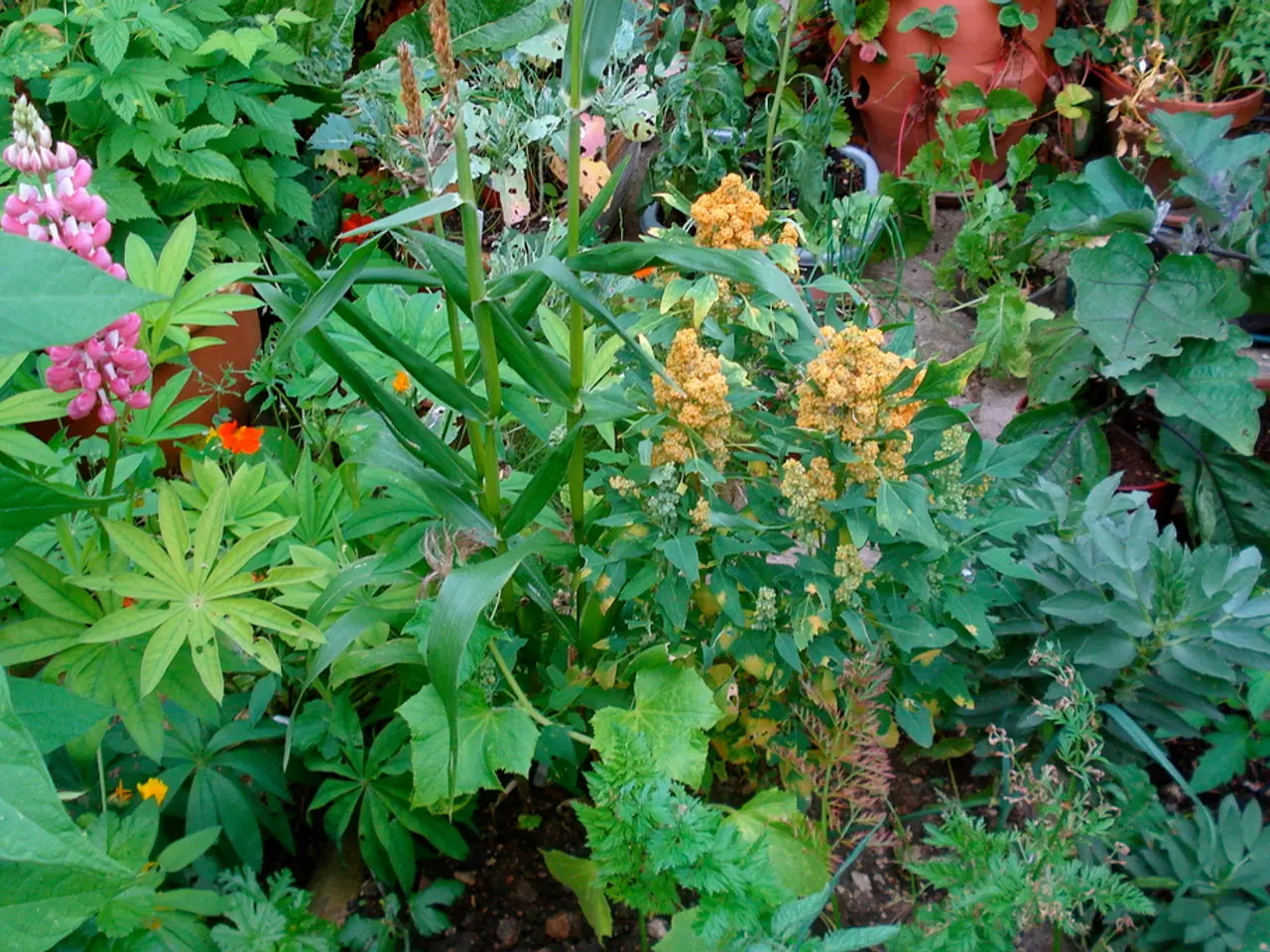Gardening Debate: Experts Share the Optimal Method to Suppress Weeds Using Mulch or Membrane in Your Garden
In the world of gardening, two popular methods for suppressing weeds have emerged: mulch and membrane, each with its own set of benefits and drawbacks.
Mulch, a layer of material spread over the soil, is a time-honoured choice. It works by blocking light while allowing water and air to flow, thereby suppressing weed growth. Mulch offers several advantages. For one, it adds organic matter and nutrients to the soil as it decomposes, benefiting soil health and structure over time. Additionally, it enhances soil moisture retention, which is particularly useful in dry conditions.
Organic mulches, such as leaf mould, well-rotted garden compost, manure, or straw, can improve soil life as they break down. However, they do require replenishing as they decompose. Moreover, while effective against many weeds, mulch may not be as effective against deeply rooted or persistent ones. Furthermore, organic mulches can harbour pests or fungal growth if poorly maintained.
On the other hand, membrane, or landscape fabric, creates a physical barrier that prevents weed growth effectively. It reduces or eliminates the need for chemical herbicides, making it a more eco-friendly option. Membranes also control soil temperature, keeping it cool in summer and warm in winter. They work well in erosion-prone areas by stabilising soil.
However, soil can become compacted underneath a membrane, potentially harming root health and earthworm activity. Some weeds can still germinate on top and require manual removal. Installation and removal can be tedious and labour-intensive. Additionally, low-quality fabric may tear easily and degrade when exposed to UV unless protected.
Membranes require covering with mulch soon after installation to protect from sun damage and enhance aesthetics. A permeable membrane, a synthetic fabric rolled out over soil, allows water and air through, making it a more ecofriendly option. Biodegradable weed membranes are another eco-friendly choice.
The debate between mulch and membrane for weed control in gardening is ongoing. Christopher O'Donoghue, director at Gardens Revived, recommends a thick layer (5-7cm) of mulch for effective weed prevention. He prefers organic mulch over membrane in living borders, as he wants the soil to breathe. Mulch is beneficial for gardens with flowers and vegetables.
Membrane is most useful if laid underneath pathways, gravel, and around low-maintenance border plants. Morris Hankinson, founder of Hopes Grove Nurseries, finds mulch to be more beneficial than membrane for weed control. However, membranes have their place, especially in low-maintenance areas with shrubs.
In conclusion, mulch is generally favoured for dynamic garden beds benefiting soil health and appearance, while membrane is preferred for long-term, low-maintenance barrier applications, especially in areas prone to persistent weed problems or erosion. The best choice depends on specific gardening goals, soil conditions, and maintenance willingness.
References:
[1] O'Donoghue, C. (2021). Mulch vs. Membrane: Weed Control in Gardening. Gardens Revived.
[2] Dray, K. (2021). The Great Mulch vs. Membrane Debate. [Online]. Available: https://www.gardensrevived.com/blog/mulch-vs-membrane-weed-control-in-gardening
[3] Hankinson, M. (2021). The Role of Mulch and Membrane in Gardening. Hopes Grove Nurseries.
In the world of home-and-garden lifestyle, both mulch and home-made membranes (landscape fabric) are popular choices for weed control in gardening. Mulch, a layer of organic material like leaf mould, garden compost, or straw, adds nutrients to the soil, enhances soil moisture retention, and deters weed growth. Membranes, on the other hand, create a physical barrier that prevents weed growth effectively and reduce the need for chemical herbicides, making them a more eco-friendly option.




